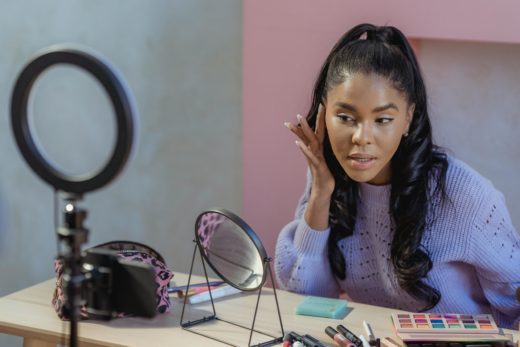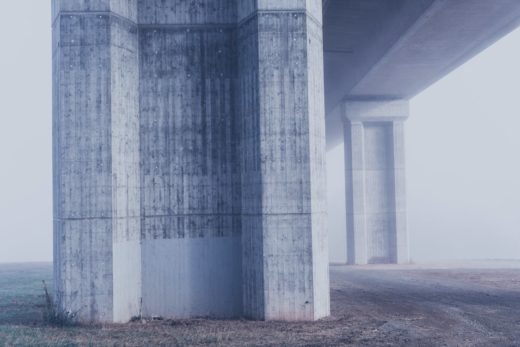
Resolution is a word that gets more airtime than it should in a world where pocket-money cameras have four times the sharpness of classic cinema. In fact, ending that preoccupation with numbers should go on a list of things we’ll try to do in 2025. A new year’s not-resolution, perhaps.
Here’s a few others.
Take user-generated content more seriously
If you’re perpetually engaged in senior positions on high-end projects at union rates, it’s easy to overlook changes in the wider industry. Of course, a lot of people are conspicuously not in that position at the moment, and there’s a lot of things to blame: the peak and decay of streaming, the hangover of the pandemic, pricy-but-mediocre franchise films and streaming series, and industrial action which, whether we like it or not, certainly kicked an industry when it was down.
The fact that this all happened at the point where user-generated content was ascendant is no coincidence, but certain markets have been able to ignore that reality because YouTube has not so far been capable of funding an Alexa 65 and a set of DNAs. That probably hasn’t changed yet, although some shockingly high-end work is being done. The Dust channel has been putting out user-generated sci-fi for aNo while, and while much of Dust’s output might not quite satisfy Netflix subscribers, it is naive to assume that the status quo is eternal.
Snobbery is involved, though as a business consideration the rise of user-generated content is a question for the c-suite more than camera crews. Other things, though, are more in the hands of the craftspeople.

Recognise production design
Given film is so much a team sport, the lack of communication between departments is often slightly shocking. Perhaps that’s because it is also a very expensive artform, provoking a nervousness which tends to keep people firmly in lane. A film set is a place where it is often better to keep silent and be thought a fool. In the abstract, most people are keenly aware that there is no good cinematography without good production design, but that’s easily forgotten in the midst of pixel peeping the latest camera release (of which more anon).
Sometimes, production design means months of preparation. Sometimes, it just means picking the right time and place. Still, interdepartmental collaboration is sometimes more competitive than it should be. That’s particularly true on less financially replete productions, where it may be accepted that the show will not compete with blockbusters but that nobody wants that outcome to be their fault. So, camera refuses to unbend for the location manager, or vice versa, and the result is unnecessarily compromised.
We could equally assign a couple of new years’ resolutions to other departments, encouraging them to recognise the need to, say, put the camera somewhere it can see both the actors at once. Ultimately, though, we should admit that too many people put too much importance on the camera, and not enough on what’s in front of it.
Be bold
Even lay audiences have started to notice that a certain proportion of mainstream film and TV has adopted a rather cautious approach to high contrast and saturated colour. Some of the accused productions have been comic book or animation adaptations, which probably ought to be the opposite. What’s even more counterintuitive is that this is invariably the product of digital cinematography, which was long held to be lacking in dynamic range – which is the same thing as high in contrast.

Engineers have since given us fifteen-stop cameras, but there seems to be a lasting societal memory of early, less-capable electronic cinematography which makes people afraid of the extremes. It’s at least as likely that fiscal conservatism is leading to artistic conservatism around the sheer cost of nine-figure blockbusters. Nobody ever got in trouble for not crushing the blacks.
The result is an identifiable lack of punch in movies and TV shows that even determinedly nontechnical people are starting to notice. There’s a whole discussion to have about history, how things once looked, and how they look now, but with modern grading we can have anything. The solution is easy, if the producers will stand it: be not afraid of minimum and maximum densities – unless you’re grading for HDR, in which case absolutely be afraid, but that’s another issue.
Stop pixel peeping
And yes, like a lecturing parent frustrated with a chocolate-smeared child’s perpetual tendency to steal cookies, we do have to talk about that obsession with numeric specifications. It is the camera department’s equivalent of bargain vodka. Everyone knows it’s a bad idea, but it starts off fun and we can stop whenever we like. Soon, though, we realise that cameras are now almost too good and pixel peeping has facilitated a generation which thinks that swear-box words like “cinematic” and “painterly” are objectively measurable. Then it turns out that our attractively-priced metaphorical booze was mostly brake fluid, and people end up spending time counting megabits that should have been spent working out a mutually-beneficial compromise with the location manager.
Everyone knows that good equipment is necessary. Everyone knows it isn’t sufficient. Everyone also knows that pixel peeping is a bad habit and complaining about it almost feels redundant. But if we can make 2025 the year when film students use social media to discuss technique more than they discuss technology, that’ll be a minor victory.

Filmtools
Filmmakers go-to destination for pre-production, production & post production equipment!
Shop Now













